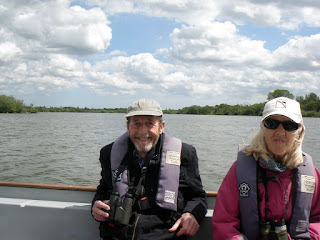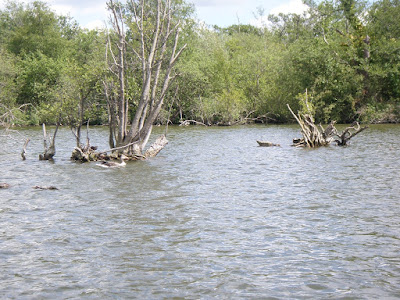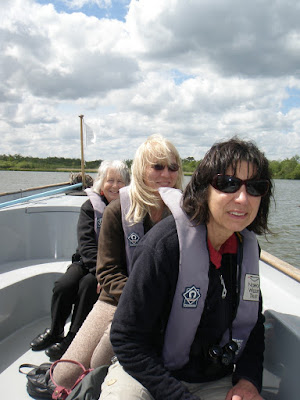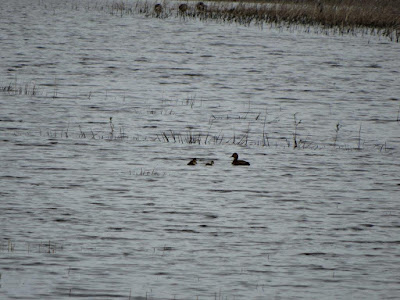Angela Collins, Volunteer coordinator
Today I visited our Ranworth reserve to meet some of our
fabulous visitor centre volunteers. The
volunteers were invited to take a boat trip by one of our experienced boat guides,
so they could learn more about the broad, its wildlife and can tell visitors
what they can expect when they book a boat trip. Plus, because of the way that the visitor centre works,
the majority of volunteers have their set days of working and so don’t often get
to see each other: this was an ideal opportunity to meet and get to know others
in their team and share experiences.
 |
|
Ranworth
Volunteers: Stuart and Sue
|
The boat trip from the floating Broads Wildlife Centre was great. The
highlight was definitely watching an otter swim by, a rare treat for us
all. There were plenty of baby birds
around, including great crested grebe, mallards, Egyptian geese & black
headed gulls. Unfortunately we didn’t
see the osprey which has been spotted again several times this year - some lucky
people having a boat trip only last week had the osprey fly directly overhead. The views from the boat as it circled around
the broad were so peaceful and beautiful, the quietness of the electric engine
meant that we were able to get close to several birds without them being
disturbed and flying away. Maurice our
boat guide, talked of the history of the broad, how it was formed by peat
digging, and how the different edges of the broad age and change its shape. The
tree lined edges are very prone to erosion and there were several trees
stranded within the broad where it would have once been water’s edge, whereas
the reed bed edges slowly encroach on the broad.

We talked about the bio-manipulation experiment; a floating
cage with water plants and a curtain to the floor of the broad, keeps fish out
and inside water fleas were able to thrive and eat the algal bloom keeping the
water clear. The volunteers were
clearly all enthusiastic and passionate and already knew a great deal about
Ranworth, but the trip showed there is always something new to learn.
 |
| Ranworth Volunteers:
Jean, Lorna and Linda |
We then returned to the floating visitor centre, where the
comments book showed that visitors arrive from all over the world; Australia,
Canada, Sweden, Germany, Switzerland, New Zealand, Italy, and Cyprus were all
found in a quick flick through the book.
The volunteers all felt that meeting and talking to a vast variety of
people was what made their role so interesting and enjoyable, and being at a
stunning location helps. On the webcam
in the centre we were able to watch 2 baby terns on the nesting platforms on
the broad. These can also be seen on our
website
if you can’t get to Ranworth.
It was a pleasure to meet some of our volunteers, and hear
about their experiences, and why they volunteer. Our visitor centres could not open as often
as they do, and provide such a warm and informative welcome to our thousands of
visitors without the week-on-week support of our wonderful volunteers. A big thank you, on behalf of the Trust, to
them all.
 |
|
Ranworth
Volunteer: Joan
|
If you are interested in volunteering with Norfolk Wildlife
Trust, please have a look on our website
at opportunities currently available, or contact me angelac@norfolkwildlifetrust.or.ukangelac@norfolkwildlifetrust.or.uk








